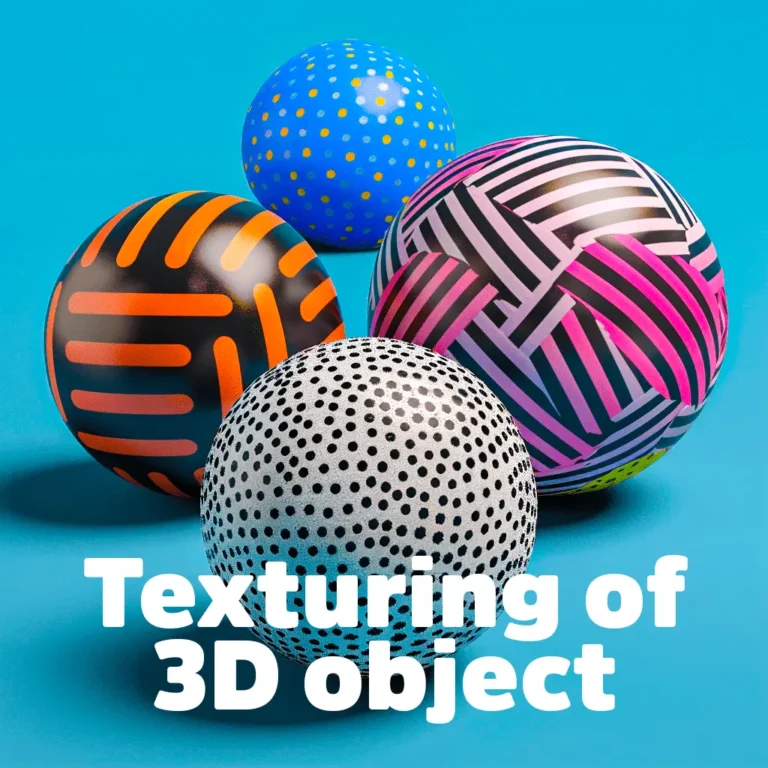3D Object Texturing and UV Mapping
3D object texturing plays a crucial role in 3D modeling and visualization. It allows to give to object certain parameters and properties to create maximum realism. It forms the foundation of the process, enabling the addition of surface details, colors, and materials. These elements breathe life into 3D objects. Prior to texture creation, it is essential to prepare the model through UV mapping. This process involves unfolding and segmenting the model. This segmentation allows for projection onto a square plane, ensuring even stretching, uniform alignment, compact arrangement, and scaling to fit within the square. Optimal texture detail and memory efficiency are achieved through dense arrangement. Models that do not meet quality standards are subdivided into multiple UVs for optimization.
Texture Creation and Application
Once the UV map is established, texture maps can be crafted in a graphics editor. This allows for manual drawing or the application of pre-made textures to specific polygons on the model. Modern software like Substance Painter and Substance Designer streamline this process by allowing direct texture application onto the model for immediate feedback. A wide array of texture maps is available for defining various elements such as skin, hair, and clothing.
Rendering Systems: PBR and Non-PBR
Software use 2 different types of rendering systems – Physically Based Rendering and Non-Physically Based Rendering.
Software employs two rendering systems: Physically Based Rendering (PBR) and Non-Physically Based Rendering. Developers created a PBR (Physically Based Rendering) system to ensure material uniformity. PBR utilizes mathematical formulas to define surface relief properties for each material and accurately simulates light interactions with those materials. This enables the calculation and display of realistic light behavior upon collision with a material. Simply, with help of PBR we create conditions that allow light to behave like it does in the real world. Due to this, the rendered object appears extremely realistic. PBR texturing workflows typically involve 10 texture maps: Albedo, Normal (Bump), Roughness, Metalness, Specular, Displacement, Opacity, Ambient Occlusion, Refraction, and Self-illumination.
Non-PBR software lacks standardized texture mapping settings but can still produce realistic images. However, typically, Non-PBR requires more texture maps than PBR to achieve an accurate result.
